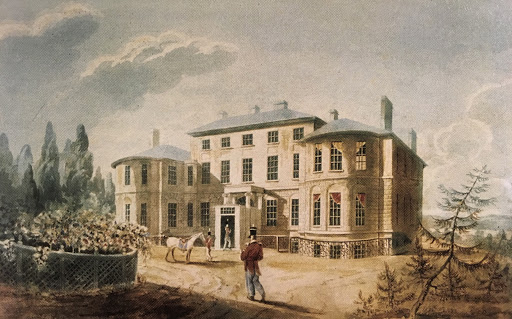Mining built #NovaScotia!
Government House – the residence and workplace of Nova Scotia’s Lieutenant Governor – features stone quarried from across #NS.
Here's the story of that beautiful building!
#nspoli #cbpoli #capebreton #Halifax @LtGovNS
@CPMcCreery @HistoricNS @TourismNS

Government House – the residence and workplace of Nova Scotia’s Lieutenant Governor – features stone quarried from across #NS.
Here's the story of that beautiful building!
#nspoli #cbpoli #capebreton #Halifax @LtGovNS
@CPMcCreery @HistoricNS @TourismNS


When he arrived in #Halifax in 1792, Sir John Wentworth (1737-1820) objected to the dank, less-than-luxurious Governor’s residence. In letters he wrote back to England, he described it as being of “green wood and rotten timbers” and “in danger of falling into the cellar.”
#nspoli
#nspoli

So he set about arranging to build a proper country manor for the lieutenant governor’s residence. The site he chose, just off what is now the corner of Spring Garden Road and Barrington St. in #Halifax, had actually been purchased by the government to be...
#nspoli #novascotia
#nspoli #novascotia

...the site of a new legislature. However, it was decided that the land was too far out of town for the legislature – the difference of a couple blocks was significant back then since #Halifax was so much smaller – so he convinced the government to use it for Government House. 

The Legislature allocated £10,500 to build it and the corner stone was laid in September 1800. The cost of the new building would soon balloon to £30,000 and would put a great strain on the colony, which only had 60,000 people at the time.
#nspoli #cbpoli #novascotia #Halifax
#nspoli #cbpoli #novascotia #Halifax

Many saw this grand expense as unreasonable. The skyrocketing costs of building Government House would even slow the building of the new legislature, Province House.
#nspoli #cbpoli #capebreton #novascotia #Halifax
#nspoli #cbpoli #capebreton #novascotia #Halifax

The overall architectural style of Government House is Georgian, which was popular in England and the colonies between 1720 and 1840.
According to Chris McCreery’s book, “Government House #Halifax,” various stones were brought from #Pictou, #Antigonish and #CapeBreton...
#nspoli
According to Chris McCreery’s book, “Government House #Halifax,” various stones were brought from #Pictou, #Antigonish and #CapeBreton...
#nspoli

...and building stone was imported from #Lunenburg and #Lockeport. Red flagstone came from Antigonish and blue rubble stone and flat stone came from #Halifax’s Northwest Arm for the foundation walls.
Red brick made in #Dartmouth was used for much of the interior supporting walls.
Red brick made in #Dartmouth was used for much of the interior supporting walls.

Some of the granite that faces the building is believed to have come Aberdeen, Scotland, and arrived in Halifax as ballast in cargo ships.
#nspoli #cbpoli #capebreton #novascotia #Halifax
#nspoli #cbpoli #capebreton #novascotia #Halifax

The sandstone that covers the façade of Government House is from Wallace, the area that provided stone for so many beautiful historic buildings, including #NovaScotia’s legislature and parts of the parliament buildings in Ottawa.
#nspoli #cbpoli #capebreton #Halifax
#nspoli #cbpoli #capebreton #Halifax

Sand was brought from #Shelburne, #EasternPassage and McNamara’s Island for use in the mortar and drainage beds.
#nspoli #cbpoli #capebreton #novascotia #Halifax
#nspoli #cbpoli #capebreton #novascotia #Halifax

Fire was a concern at the time due to damage in #Halifax resulting from extensive wooden construction - Halifax eventually passed a bylaw in 1857 that required large buildings to be made of stone or brick - and Government House was likely the first such house in Canada...
#nspoli
#nspoli

...to be equipped to suppress the outbreak of fire.
The kitchen and lower story were built with stone and lime 18 inches thick, and the floors were laid with stone. Water pipes were also built into most rooms.
#nspoli #cbpoli #capebreton #novascotia #Halifax
The kitchen and lower story were built with stone and lime 18 inches thick, and the floors were laid with stone. Water pipes were also built into most rooms.
#nspoli #cbpoli #capebreton #novascotia #Halifax

Lieutenant Governor Wentworth passed away in Halifax in 1820 and was buried in the crypt at St. Paul’s Church on Barrington St.
#nspoli #cbpoli #capebreton #novascotia #Halifax

#nspoli #cbpoli #capebreton #novascotia #Halifax


• • •
Missing some Tweet in this thread? You can try to
force a refresh



























